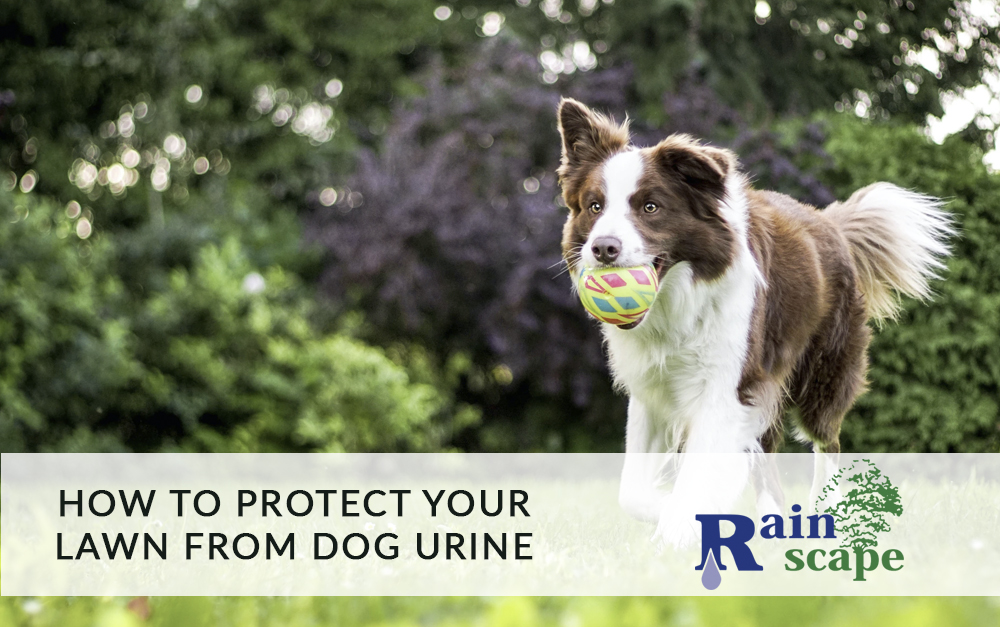Everyone loves a cute cuddly puppy! Those adorable little paws, noses and ears just make our hearts thump. This time of year, as the sun is shining brighter and longer, more and more people are taking those adorable puppers on longer walks around our neighborhoods. Between neighbor dogs and our own furry family members we may notice that our lawns are starting to cry for help. Have you noticed an increase in brown urine spots on your lawn? What can you do to prevent this?
-
When you see it, spray it
Obviously, we aren’t standing around watching our dog or other dogs eliminate every second, but if we do catch it, we can act fast to prevent spots. Using a hose to spray the area or a bucket of repurposed water, you can douse the area and dilute the urine.
-
Start with the best grass for dogs
Choosing the right grass is a great place to start in preventing brown spots. When planting or replanting your lawn choose your grass with dogs in mind. Fescue and perennial ryegrass are the most urine tolerant. You should avoid Kentucky Bluegrass and Bermuda grass when possible as these are the most sensitive to urine scalding.
Some other salt and urine tolerant grasses are Zoysia, Paspalum and Distichlis, but these are more of a meadow grass and are generally taller than a traditional lawn. You can also use clover instead of grass which requires less water and fertilization. Another great alternative option is artificial turf/grass. Artificial grass is easily cleaned up after dog usage.
-
Create a potty spot
Fight the battle against the brown by designating a potty spot. Create a small graveled, mulched or turf area for your pup. You can train them to use this spot and spruce it up with some decorative ferns or other greenery.
What about the neighbor dogs that can’t resist your lawn? You can put this potty spot in a common area with some cute signage such as “pet relief spot.” A curb side spot with a piece of sod or patch of grass and a cute sign to direct passerby to utilize this spot instead of your lush lawn. You could also add a friendly deterrent sign to your lawn asking them to please respect the lawn and not allow their pets to eliminate.
-
Apply a dog urine repellent
Sometimes signs just don’t work! If your lawn is in a high traffic area you can use a repellent spray. The spray masks the preexisting urine smell which prevents dogs from marking in the same spot as prior dogs and gives off an unpleasant scent to dogs. These don’t always work, and some require reapplication after rain. While not 100% effective it still helps. You can also make your own DIY repellent using white vinegar, apple cider vinegar or citrus-scented water.
-
Fix existing spots
To help heal your existing brown spots you can water the lawn well to help it recover. You will want to mow the lawn high, raising the blade to 2 or 3 inches to help alleviate stress. Increase the nitrogen in your lawn with fertilization. Remove dead spots and replace with new patches of well-watered sod or reseed with fescue or ryegrass.
Our 4-legged friends are well-worth the trouble it takes to keep our lawns lush and green. We can always find options to prevent, fix or eliminate the issues. If we can help you resolve any of your landscaping quandaries, we are happy to help! In the meantime, give those pups some snuggles and enjoy the sunshine!

